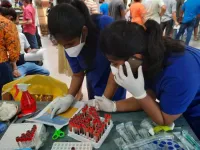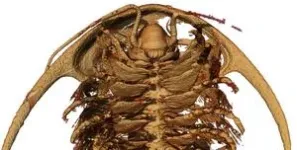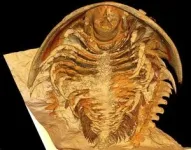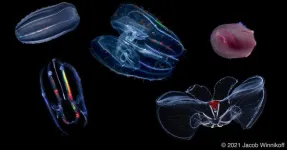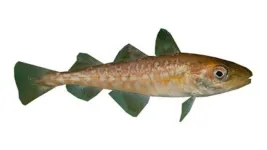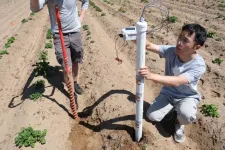(Press-News.org) The most obese children with dengue are more than twice as likely as others to be hospitalized with dengue, according to study of 4,782 10- to 18-year-olds in Sri Lanka.
####
Article URL: http://journals.plos.org/plosntds/article?id=10.1371/journal.pntd.0012248
Article Title: Is the rise in childhood obesity rates leading to an increase in hospitalizations due to dengue?
Author Countries: Sri Lanka, United Kingdom
Funding: This study has been supported by the World Health Organization Unity Studies (GNM and CJ), a global sero-epidemiological standardization initiative, with funding to the World Health Organization and the UK Medical Research Council (GSO). The World Health Organization unity trial protocol was adopted in trial design. The funders had no role in data collection and analysis, decision to publish, or preparation of the manuscript.
END
The most obese children with dengue are more than twice as likely as others to be hospitalized with dengue, according to study of 4,782 10- to 18-year-olds in Sri Lanka
2024-06-27
ELSE PRESS RELEASES FROM THIS DATE:
Prehistoric Pompeii discovered: Most pristine trilobite fossils ever found shake up scientific understanding of the long extinct group
2024-06-27
Researchers have described some of the best-preserved three-dimensional trilobite fossils ever discovered. The fossils, which are more than 500 million years old, were collected in the High Atlas of Morocco and are being referred to by scientists as “Pompeii” trilobites due to their remarkable preservation in ash.
The trilobites, from the Cambrian period, have been the subject of research by an international team of scientists, led by Prof Abderrazak El Albani, a geologist based at University of Poitiers and originally from Morocco. The team included Dr Greg Edgecombe, a palaeontologist ...
Scientists use computational modeling to guide a difficult chemical synthesis
2024-06-27
CAMBRIDGE, MA — Researchers from MIT and the University of Michigan have discovered a new way to drive chemical reactions that could generate a wide variety of compounds with desirable pharmaceutical properties.
These compounds, known as azetidines, are characterized by four-membered rings that include nitrogen. Azetidines have traditionally been much more difficult to synthesize than five-membered nitrogen-containing rings, which are found in many FDA-approved drugs.
The reaction that the researchers used to create azetidines is driven by a photocatalyst that excites the molecules from their ground energy state. Using computational models that they developed, the researchers ...
The worm has turned: DIY lab platform evaluates new molecules in minutes
2024-06-27
Plants are powerhouses of molecular manufacturing. Over the eons, they have evolved to produce a plethora of small molecules — some are beneficial and valuable to humans, others can be deadly. For years, a good way for scientists looking for new medicines to distinguish beneficial plant-derived molecules from harmful ones has been through a scientific sniff test — dab a bit of the molecule at one end of a petri dish and drop tiny nematode worms (C. elegans) at the other, then wait to see if the chemically sensitive worms move toward or away from the compound in question, a process known as chemotaxis.
This “artisanal” ...
Under pressure: How comb jellies have adapted to life at the bottom of the ocean
2024-06-27
The bottom of the ocean is not hospitable: there is no light; the temperature is freezing cold; and the pressure of all the water above will literally crush you. The animals that live at this depth have developed biophysical adaptations that allow them to survive in these harsh conditions. What are these adaptations and how did they develop?
University of California San Diego Assistant Professor of Chemistry and Biochemistry Itay Budin teamed up with researchers from around the country to study the cell membranes of ctenophores (“comb jellies”) and found they had unique lipid structures that allow them to live under intense pressure. Their work appears in Science.
Adapting ...
A CHARMed collaboration created a potent therapy candidate for fatal prion diseases
2024-06-27
EMBARGOED UNTIL 27-Jun-2024 14:00 ET
Drug development is typically slow: the pipeline from basic research discoveries that provide the basis for a new drug to clinical trials to production of a widely available medicine can take decades. But decades can feel impossibly far off to someone who currently has a fatal disease. Broad Institute Senior Group Leader Sonia Vallabh is acutely aware of that race against time, because the topic of her research is a neurodegenerative and ultimately fatal disease–fatal familial insomnia, a type of prion disease–that she will almost certainly develop as she ages. Vallabh and her husband, Eric Minikel, switched careers ...
Researchers find flexible solution for separating gases
2024-06-27
For a broad range of industries, separating gases is an important part of both process and product—from separating nitrogen and oxygen from air for medical purposes to separating carbon dioxide from other gases in the process of carbon capture or removing impurities from natural gas.
Separating gases, however, can be both energy-intensive and expensive. “For example, when separating oxygen and nitrogen, you need to cool the air to very low temperatures until they liquefy. Then, by slowly increasing the temperature, the gases will evaporate at different points, allowing one to become a gas again and separate out,” explains Wei Zhang, a University of Colorado Boulder professor ...
Pacific cod can’t rely on coastal safe havens for protection during marine heat waves, OSU study finds
2024-06-27
During recent periods of unusually warm water in the Gulf of Alaska, young Pacific cod in near shore safe havens where they typically spend their adolescence did not experience the protective effects those areas typically provide, a new Oregon State University study found.
Instead, during marine heat waves in 2014-16 and 2019, young cod in these near shore “nurseries” around Kodiak Island in Alaska experienced significant changes in their abundance, growth rates and diet, with researchers estimating that only the largest 15-25% of the island’s cod population survived the summer. Even after the high temperatures subsided, the ...
Bird flu stays stable on milking equipment for at least one hour
2024-06-27
Bird flu, or H5N1 virus, in unpasteurized milk is stable on metal and rubber components of commercial milking equipment for at least one hour, increasing its potential to infect people and other animals, report researchers from the University of Pittsburgh School of Medicine and Emory University in Emerging Infectious Diseases.
The study underscores the heightened risk of bird flu exposure for dairy farm workers and signals the need for wider adoption of personal protective equipment, including face shields, masks and eye protection.
“Dairy cows have to be milked even if they are sick, and it has not been clear for how long the virus contained in residual milk from the ...
Printed sensors in soil could help farmers improve crop yields and save money
2024-06-27
MADISON — University of Wisconsin–Madison engineers have developed low-cost sensors that allow for real-time, continuous monitoring of nitrate in soil types that are common in Wisconsin. These printed electrochemical sensors could enable farmers to make better informed nutrient management decisions and reap economic benefits.
“Our sensors could give farmers a greater understanding of the nutrient profile of their soil and how much nitrate is available for the plants, helping them to make more precise decisions on how much fertilizer they really need,” says Joseph Andrews, an assistant professor of mechanical ...
Neighborhood opportunities influence infant development and cognition
2024-06-27
Growing up in neighborhoods with more educational and socioeconomic opportunities has a positive impact on infants’ brain activity, according to new research from Boston Medical Center (BMC). The study, published in The Journal of Developmental & Behavioral Pediatrics, suggests that enhancing neighborhood opportunities, particularly in education, can be a promising approach to promoting early childhood development.
A team of early childhood researchers examined how neighborhood opportunity – the socioeconomic, educational, health, and ...
